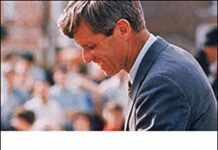
Ebook Info
- Published: 2012
- Number of pages: 654 pages
- Format: PDF
- File Size: 8.34 MB
- Authors: David Halberstam
Description
This vivid New York Times bestseller about 1950s America from a Pulitzer Prize–winning journalist is “an engrossing sail across a pivotal decade” (Time). Joe McCarthy. Marilyn Monroe. The H-bomb. Ozzie and Harriet. Elvis. Civil rights. It’s undeniable: The fifties were a defining decade for America, complete with sweeping cultural change and political upheaval. This decade is also the focus of David Halberstam’s triumphant The Fifties, which stands as an enduring classic and was an instant New York Times bestseller upon its publication. More than a survey of the decade, it is a masterfully woven examination of far-reaching change, from the unexpected popularity of Holiday Inn to the marketing savvy behind McDonald’s expansion. A meditation on the staggering influence of image and rhetoric, The Fifties is vintage Halberstam, who was hailed by the Denver Post as “a lively, graceful writer who makes you . . . understand how much of our time was born in those years.” This ebook features an extended biography of David Halberstam.
User’s Reviews
Reviews from Amazon users which were colected at the time this book was published on the website:
⭐Recap of the decade, learned details each chapter I was unaware of. You think you know from school but this goes deeper. Love the topic each chapter approach.
⭐Nostalgia!
⭐Really enjoyed this book. I grew up in the 1970s and never thought much about the 1950s. Really enjoyed the stories about the evolution of car design, fast food, housing boom, prosperity and the emerging civil rights movement. Also good info on foreign relations, emergence of atomic bomb, McCarthyism, etc. Very readable style, never got boring.
⭐The decade was 70% completed when I was born. I have no recall of the 1950s, even though I was born late in the decade. Having now read this massive history, I now feel as if I lived through the decade.Halberstam begins his story with Truman’s election of 1948, the Soviet test of a nuclear weapon in 1949, and the beginning of the Korean War in 1950. The short time the United States had as the leader of the world and the only nation with nuclear weapons had come to an end. We were beginning a new era, the Cold War. The uneasy situation with the Soviets would remain throughout the decade and Halberstam ends this book with the story of the U2 being shot down over Russia (which ended Eisenhower’s quest for a nuclear treaty) and the planning for the Bay of Pigs invasion of Cuba.A lot happened in the 1950s and, as Halberstam points out, much of what occurred in the 60s had its roots in the 50s. From music to Vietnam, civil rights to foreign policies, the sexual revolution to television, space and science to the rise of suburbia, McCarthy to Kerouac, the 60s (and 70s) grew out of seeds planted in the 50s. Halberstam follows these developments through vignettes, stories of what was happening. In ways, the stories can stand alone, but taken together they paint a picture of vibrant decade that too often has been portrayed as sleepy.Many of the people whom Halberstam writes about are well known and became even more famous in the 1960s (Richard Nixon, Hugh Hefner, Marlo Brando, Marlyn Monroe, Elvis Presley, Martin Luther King, among others). Others were less well known, but their ideas caught on as they developed fancy car designs, hotel and restaurant empires, housing tracks, and pushed America into a consumer culture. As I approached the end of the book, I was shocked to see one such individual that I knew personally. Kensinger Jones (pages 629-635) spent his retirement years on a farm south of Hastings, Michigan. He was a member of First Presbyterian Church in Hastings while I was pastor. Unfortunately, he was unable to be very active due to health issues, but I often visited with him and his wife Alice and enjoyed our conversations. Ken Jones was responsible for a series of Chevrolet ads that weren’t designed to “sell cars, but to sell dreams.” These ads were essentially a mini-story told visually as the consumer was encouraged to “See the U.S.A. in your Chevrolet.” While Ken certainly appreciated the power of the image, as Halberstam notes, he also appreciated the written word. After he could no longer attend church, he would read my sermons and often wrote notes of appreciation. And he was an author himself. I have two of his books on my shelf today.Toward the end of Eisenhower’s presidency, there were those who suggested it was a shame there was the 23rd Amendment that kept a President from running for a third term. Eisenhower, whom it seems in Halberstam was never sure if he wanted to be President, would have nothing to do with such talk. He didn’t want a third term nor did he think anyone should be President over the age of 70. I wonder what Ike would think about our last election with both candidates over the 70 mark?This is a wonderful book with many great stories. Even those who have no memories of the 1950s will find themselves entertained and will learn how this decade influenced future decades in America.
⭐Book like new, great price, as described.
⭐Yes, the book is biased towards a leftist perspective and there is more editorializing that I would like to see in a history book (I like my history books to be a bit more impartial as they tell the account of events). I get Halberstam’s point that much of what happened in the 60’s had its seeds in the 50’s, and that not everyone was happy with how things were. However, there was something off putting to me about how he presented certain information. Sometimes there was speculation about what someone was likely thinking without any quotes to back this up.The author also seemed to have somewhat of an obsession with who was cool (Marlon Brando) and who was trying but failing (Hugh Hefner). I sensed a certain contempt for people who were square (such as people living in Levittown), yet it felt as if there was some hero worship of bohemian personalities such as the Beat poets/writers.All that being said, I believe the positives greatly outweigh the negatives for me. First is the ambitious scope of the book. The book manages to cover a lot of ground with enough depth that I felt I understood this decade better than before. For example, much time was spent on the people who worked on the atomic bomb and how the government treated some of them after they had reservations about working on the H-bomb. The author also talks about the red scare and McCarthyism. I found his treatment of Eisenhower fair; he comes across as a basically decent human being with some warts (I have a biography of this president ready in my kindle as a result of this book). General McArthur didn’t fare as well, and neither did Nixon and Pat (his wife) (though I appreciated getting some insight into their hard scrabble backgrounds which made me feel I understood them better).The civil rights movement is also discussed, including Emmet Till’s murder , the Montgomery bus boycott, and later the incident at Little Rock with the integration of the black students. Martin Luther King is profiled, but I don’t recall Malcom X being given much if any time, which seems like a glaring omission. Other important people of the time include Betty Friedan, Margaret Sanger, Elvis Presley, Lucille Ball, Desi Arnaz, Marylyn Monroe, Marlon Brando and James Dean. I appreciated learning more about popular culture at the time. I particularly appreciated the perspective on television, and I believe I better understand how revolutionary it was. I kept thinking of the internet as a parallel.The car companies, and other aspects of how commerce changed also get plenty of coverage, mostly I suspect because of the new affluence of the population.All in all, much recommended, and I’ll be checking out his other books.
⭐It’s true that the 1950s are remembered in black and white, while the 60s in full color. Yet – the author shows – the 60s pallet was actually set a whole decade before, when things like TV shows, the “pill,” and McDonalds all began… the Fifties
⭐Well written book that covers many aspects of the USA in the fifties. I’m a fan of American Blues, Rockabilly and Rock’n’roll and I like to know more about the society where this great music was created. Author is a good writer with a big knowledge of the topic as far as I – a Swede – can judge.
⭐This book provides a logical and interwoven narrative of the decade which saw the emergence of USA as the dominant nation in the world following World War 2. A ‘must read’.
⭐This is the best book that I have read for a long time. It is not however, a comprehensive history of the decade but rather, a detailed and engrossing account of American history during the period – no Suez or Hungary here. The breadth of coverage, in terms of topics covered, is stunning (housing, civil rights, foreign policy, pop culture etc etc) and it contains chapters about many, many things I knew nothing about.Halberstam’s writing style is easy to follow and includes an appropriate number of humorous anecdotes. Highly recommended.
⭐just perfect
Keywords
Free Download The Fifties in PDF format
The Fifties PDF Free Download
Download The Fifties 2012 PDF Free
The Fifties 2012 PDF Free Download
Download The Fifties PDF
Free Download Ebook The Fifties


